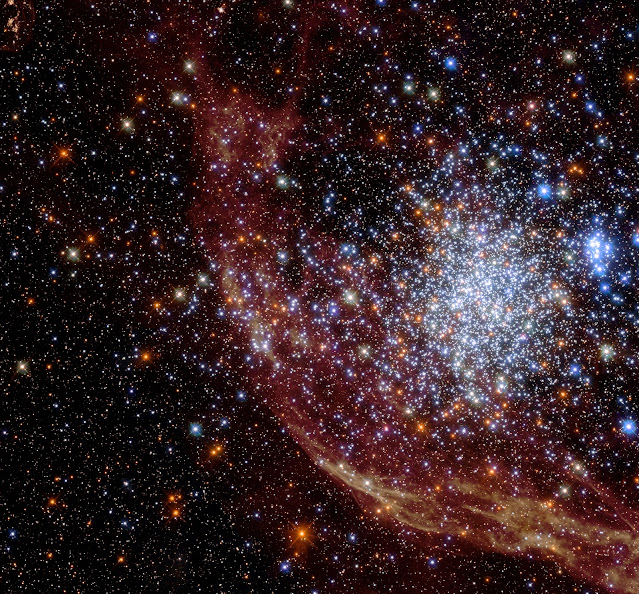Star Cluster NGC 1850 | Hubble
Star cluster NGC 1850 is approximately 63,000 times the mass of the Sun, and its core is roughly 20 light-years in diameter. This 100 million-year-old globular cluster is located in the Large Magellanic Cloud, a satellite galaxy of the Milky Way and a birthplace for billions of stars. The cluster is approximately 160,000 light-years away in the constellation Dorado. Typical of globular clusters, it is a spherical collection of densely packed stars held together by mutual gravitational attraction. Unlike most globular clusters, however, the stars of NGC 1850 are relatively young. Globular clusters with young stars such as NGC 1850 are not present in our own Milky Way galaxy.
Astrophysicists theorize that when the first generation of stars in NGC 1850 was born, the stars ejected matter like dust and gas into the surrounding cosmos. The density of the newly formed star cluster was so high that this ejected matter could not escape the cluster’s gravitational pull, causing it to stay nearby. The intense gravity of the cluster also pulled in hydrogen and helium gas from its surroundings. These two sources of gas combined to form a second generation of stars, increasing the density and size of this globular cluster.
In 2021, scientists detected the presence of a black hole in NGC 1850. They have also detected many brighter blue stars (seen on the right of the second image) that burn hotter and die younger than red stars. Also present are around 200 red giants, stars that have run out of hydrogen in their centers and are fusing hydrogen further from their core, causing the outer layers to expand, cool, and glow red (seen throughout the second image). Surrounding the cluster is a pattern of nebulosity, diffuse dust and gas theorized to come from supernova blasts (the blue veil-like structures on the first image and the red ones on the second image).
Credits: NASA, European Space Agency and N. Bastian (Donostia International Physics Center); Processing: Gladys Kober (NASA/Catholic University of America)
Release Date: Dec. 8, 2022
#NASA #Hubble #Astronomy #Space #Science #Stars #StarClusters #GlobularStarCluster #NGC1850 #Nebula #Dorado #Constellation #LMC #Galaxy #Cosmos #Universe #HST #SpaceTelescope #ESA #Europe #GSFC #STScI #UnitedStates #STEM #Education

No comments:
Post a Comment